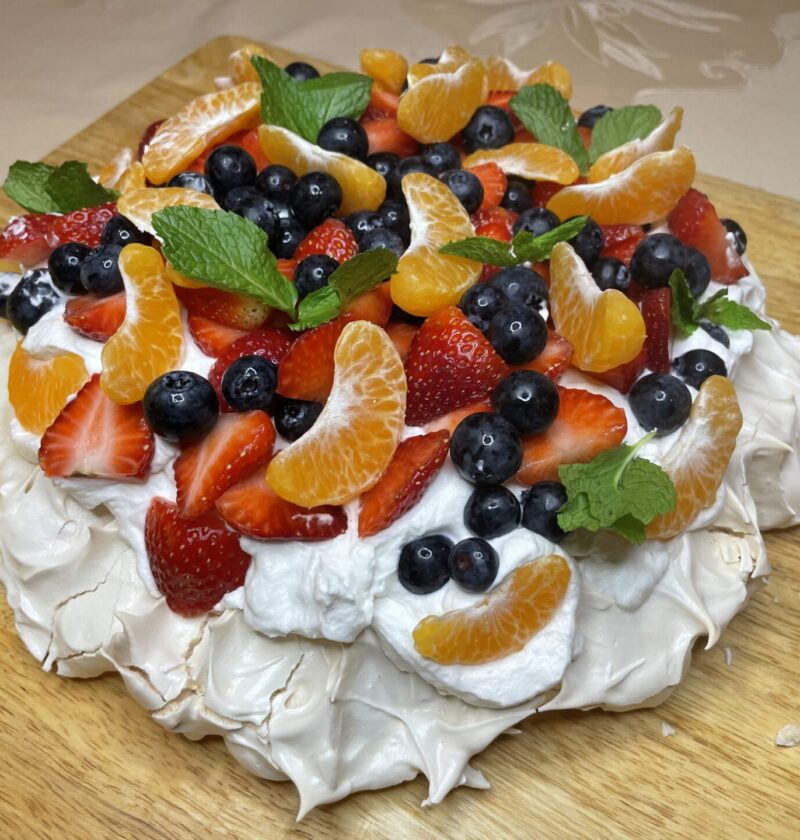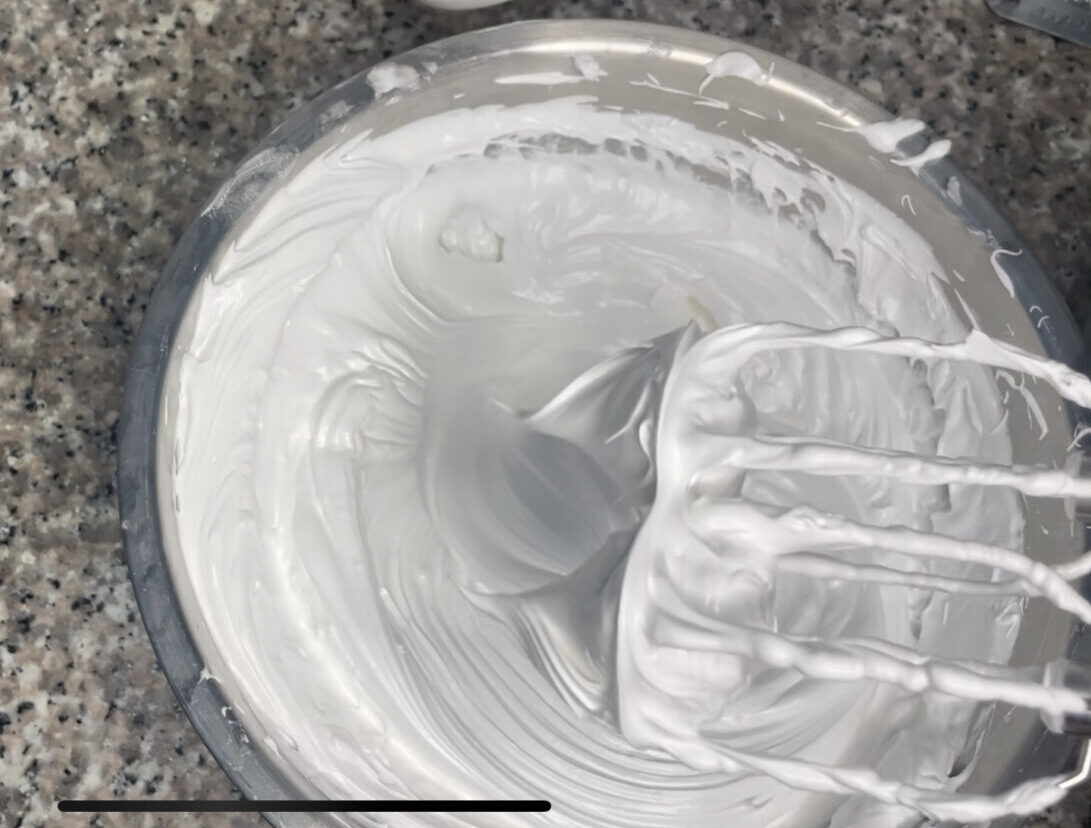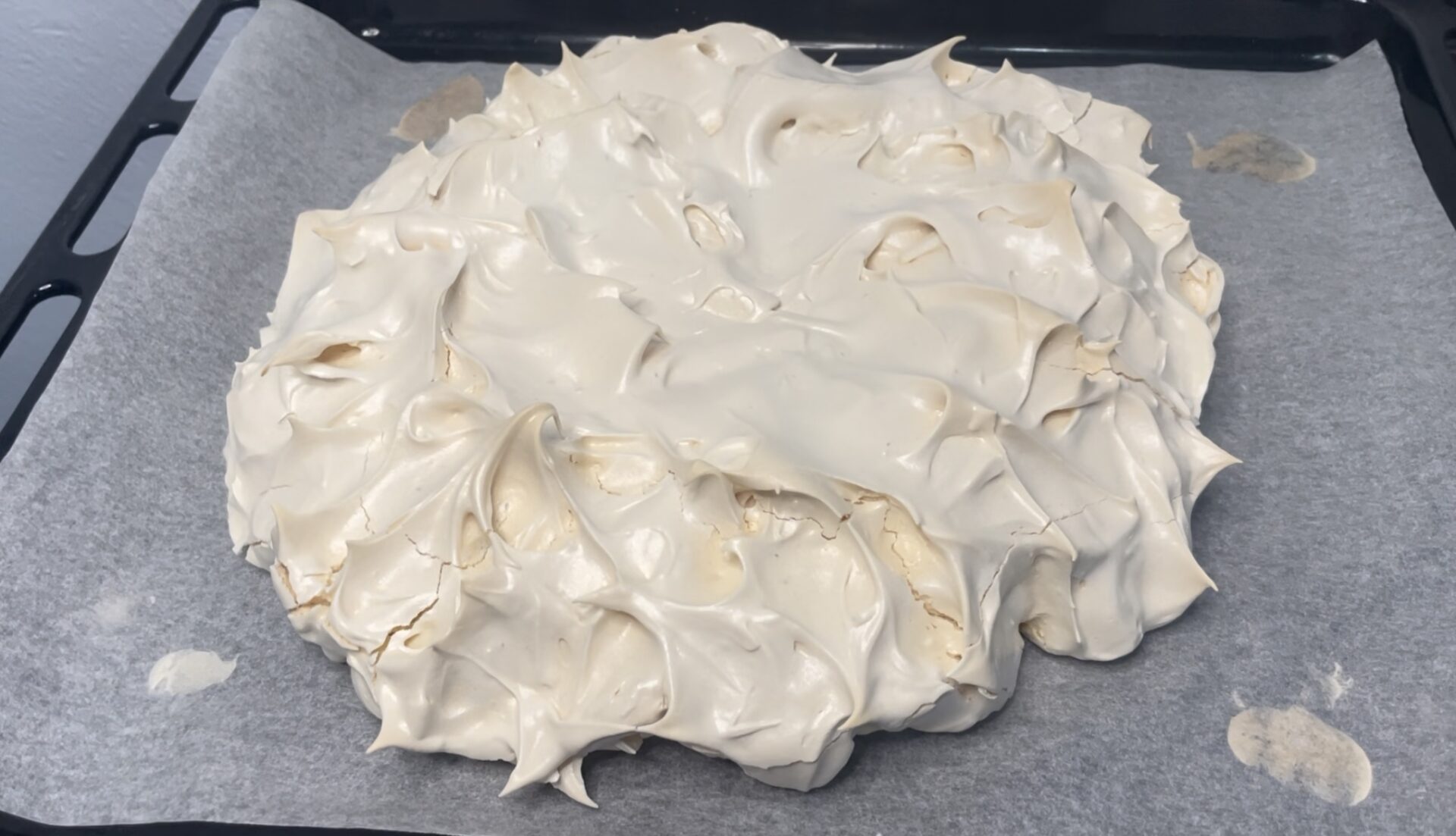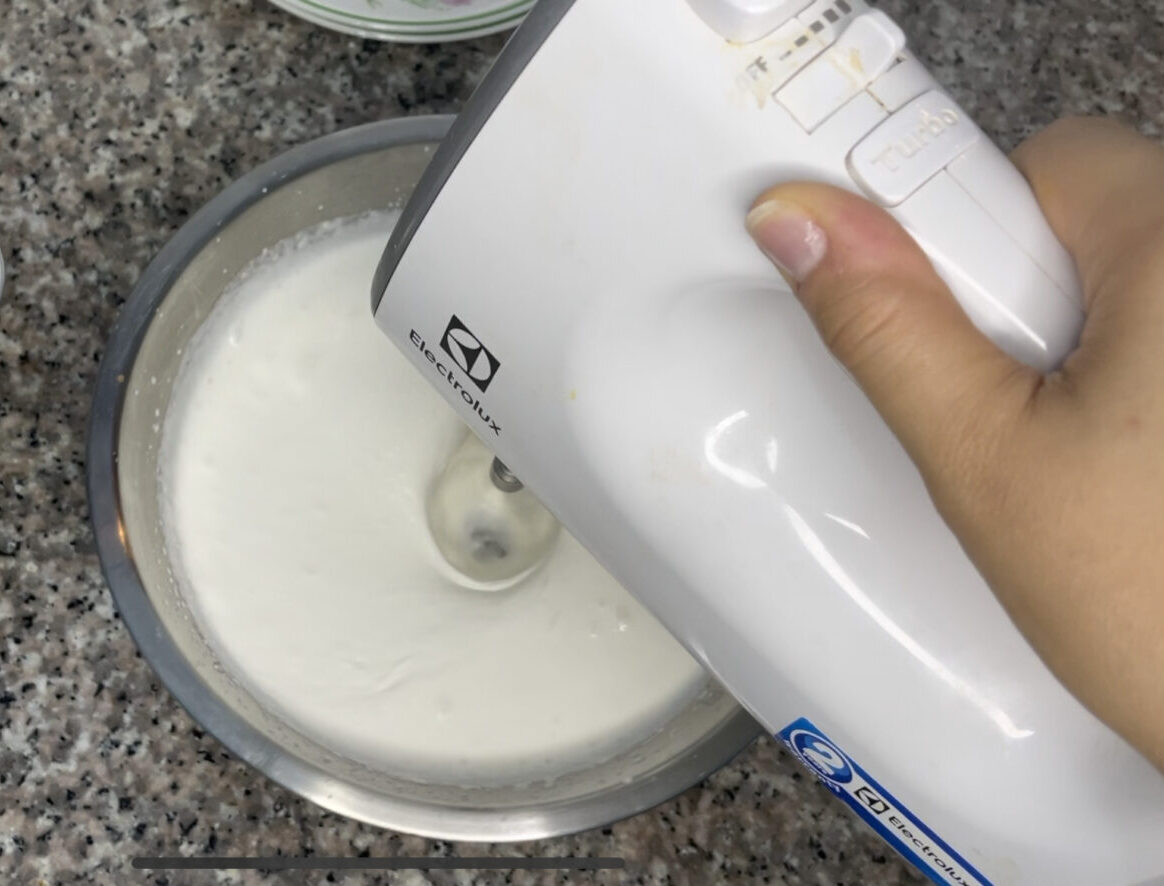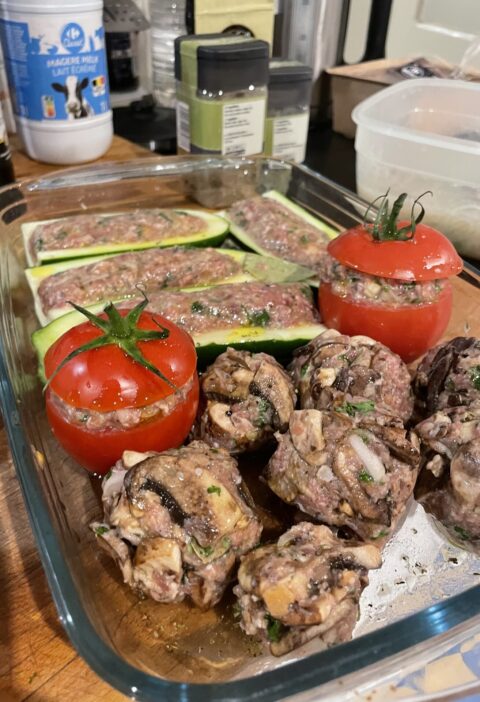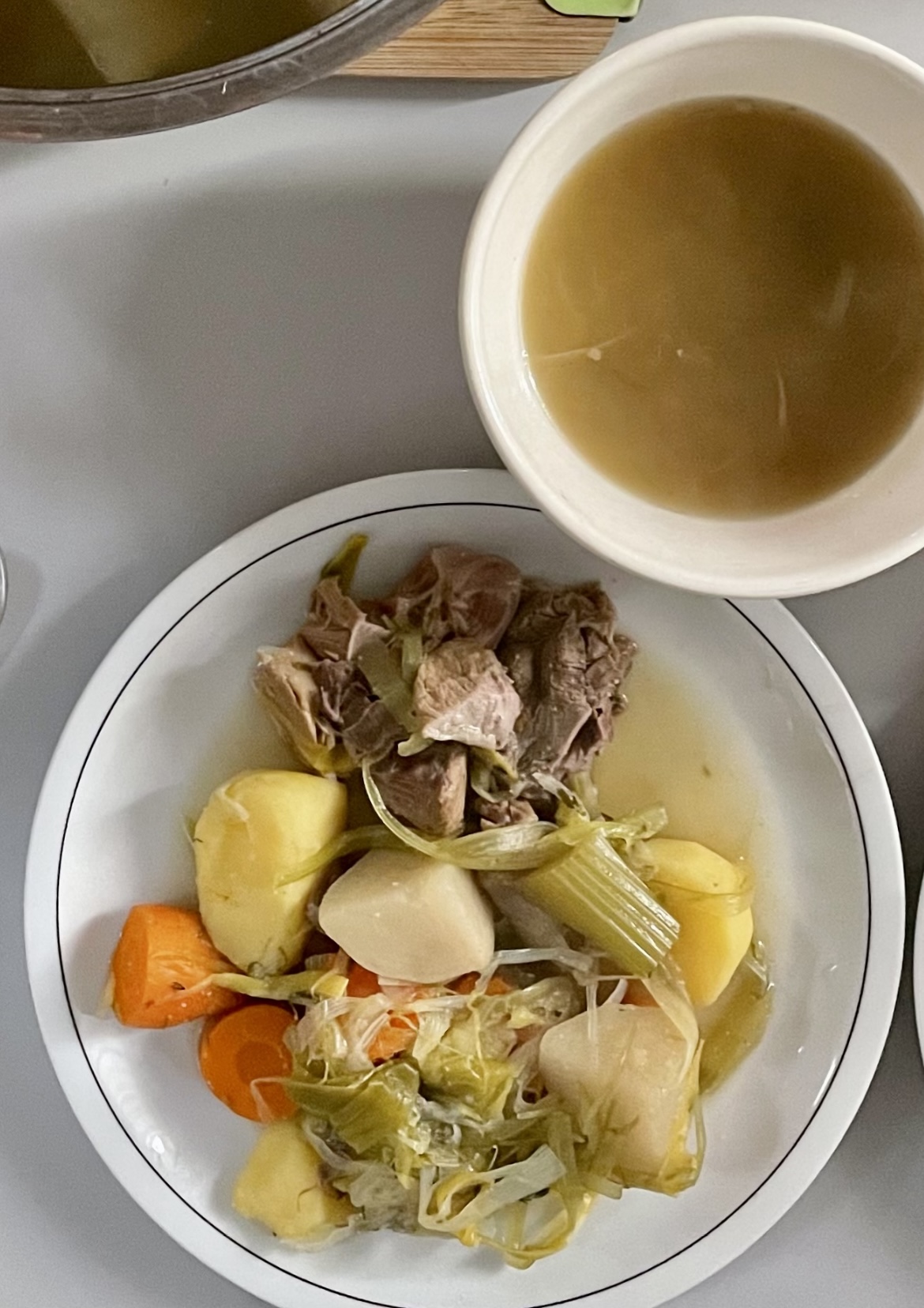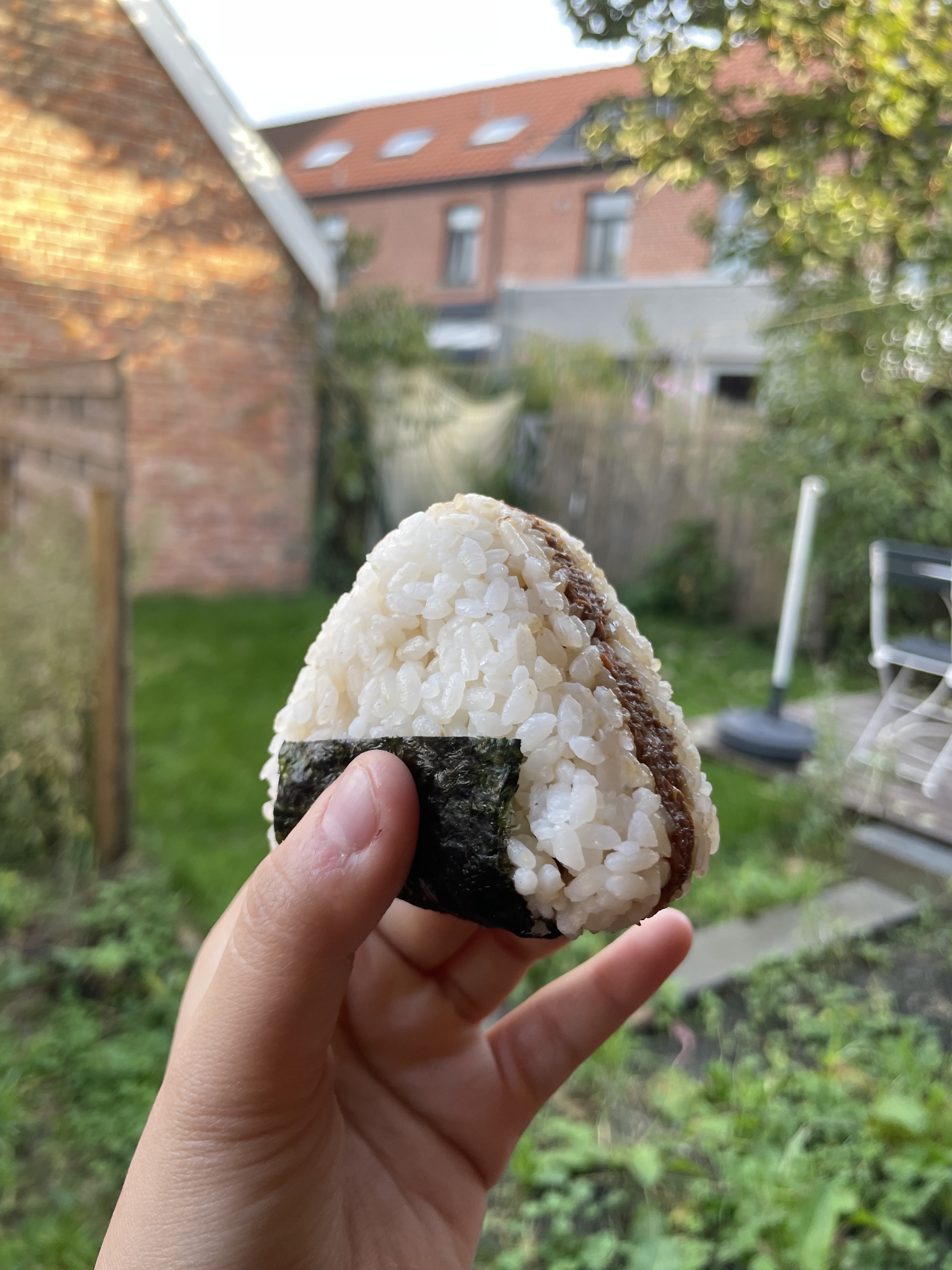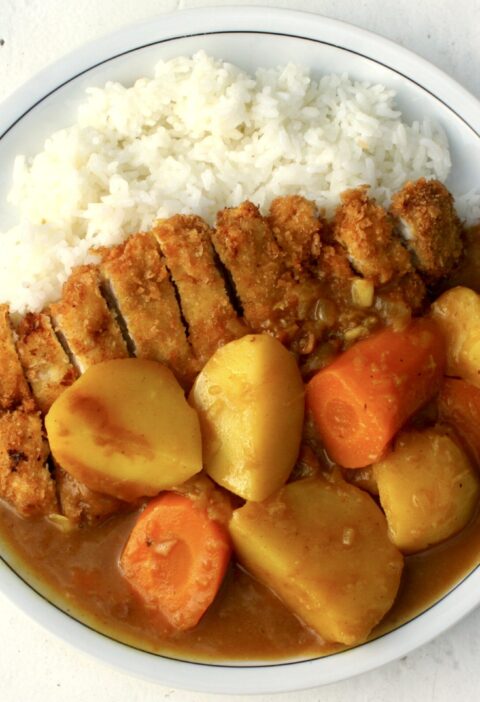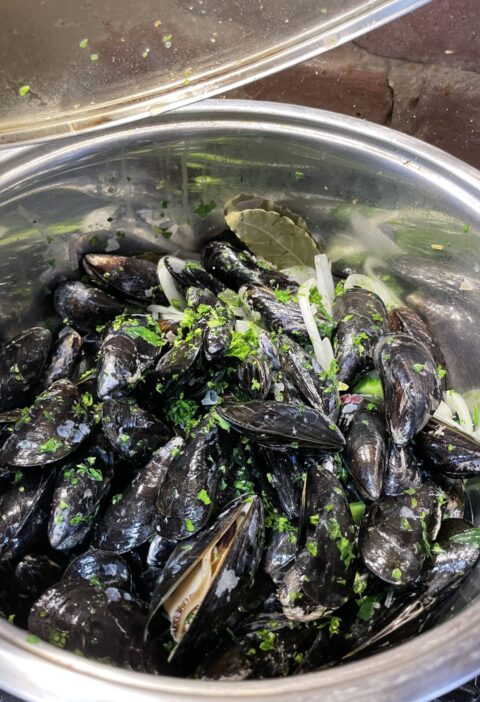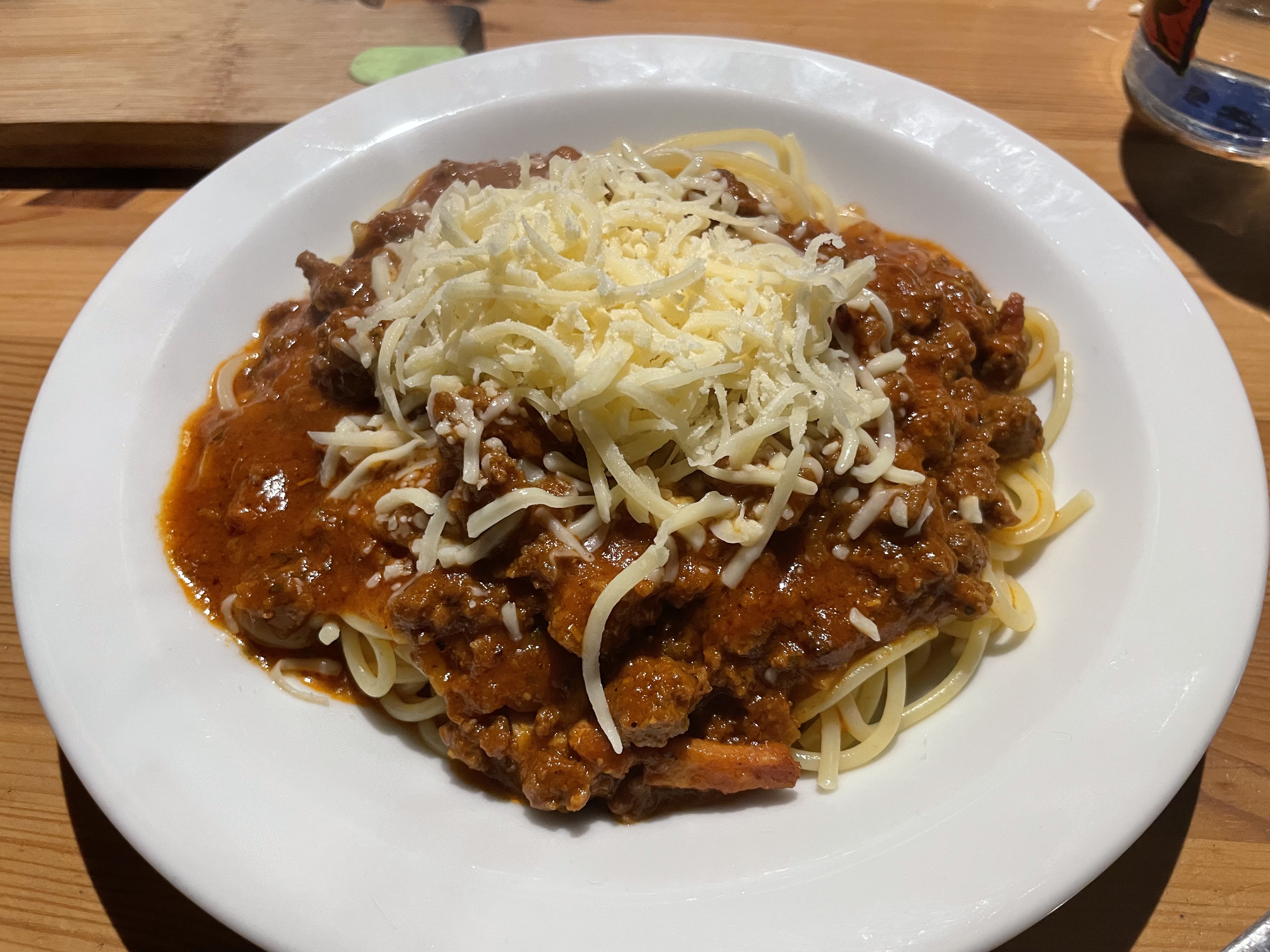NOTE THAT THIS RECIPE NEED TO REST OVER NIGHT
Pavlova, to me, is a dessert that embodies the essence of refreshment, particularly during the summer season. The inclusion of fresh, juicy fruits, refreshing on a hot day. However, the weather and the cake is a dilemma to itself, being a meringue and cream, doesn’t naturally align with heat (Summer). Thus, meringue, a key component of Pavlova, tends to be a bit finicky when confronted with humidity and heat. Having made Pavlova both in Thailand, where humidity is high, and in Belgium, where the air carries a hint of humidity even the weather is colder, I’ve come to a conclusion of the need for an approach to ensure success.
In this recipe, I’ll be sharing all the crucial tips you need to follow to guarantee 100% success. So, if you’ve ever been daunted by the idea of making Pavlova, fear not. The goal is for you to be able to create Pavlova in the comfort of your home, without the need to worry if you will fail. Once you’ve succeed one time of your Pavlova, you’ll likely discover that it is like a piece of cake.
With the insights provided in this recipe, you’re well-equipped to conquer the challenges of meringue in any climate. The reward? A perfectly executed Pavlova that is entirely your own creation.
TIPS:
The meringue forms the foundation of the cake. However, there’s a challenge: meringue can sometimes turn out chewy instead of the intended light and crispy texture. How to fix it?
Ingredients:
EGGS:
1. Here’s an important pointer: The quantity of “4 egg whites” may vary significantly, spanning 100 to 180ml, contingent on egg size and how effectively you extract the egg white from each egg. The precise measure of egg whites holds the crucial element for a triumphant Pavlova outcome.
2. Absolutely no yolk must be present. Even the smallest trace of yolk can devastate the entire mixture, preventing it from achieving the desired fluffiness. Therefore, if you inadvertently introduce yolk into the whites, an effective method is to carefully remove it using a piece of eggshell (this technique is also valuable for extracting shell fragments). However, if there’s even a suspicion that the yolk might have contaminated the rest of the egg whites, it’s advisable to begin anew. Taking such a risk isn’t justified!
3. Make sure your bowls and whisk are clean and dry. Grease and water can stop whites from fluffing.
Caution:
4. For the shaping step (which eliminates the need to draw a circle on paper), you can directly shape it on a parchment paper placed onto the tray. This way, you can skip the process of transferring from left to right and then having to proof it on the floor.
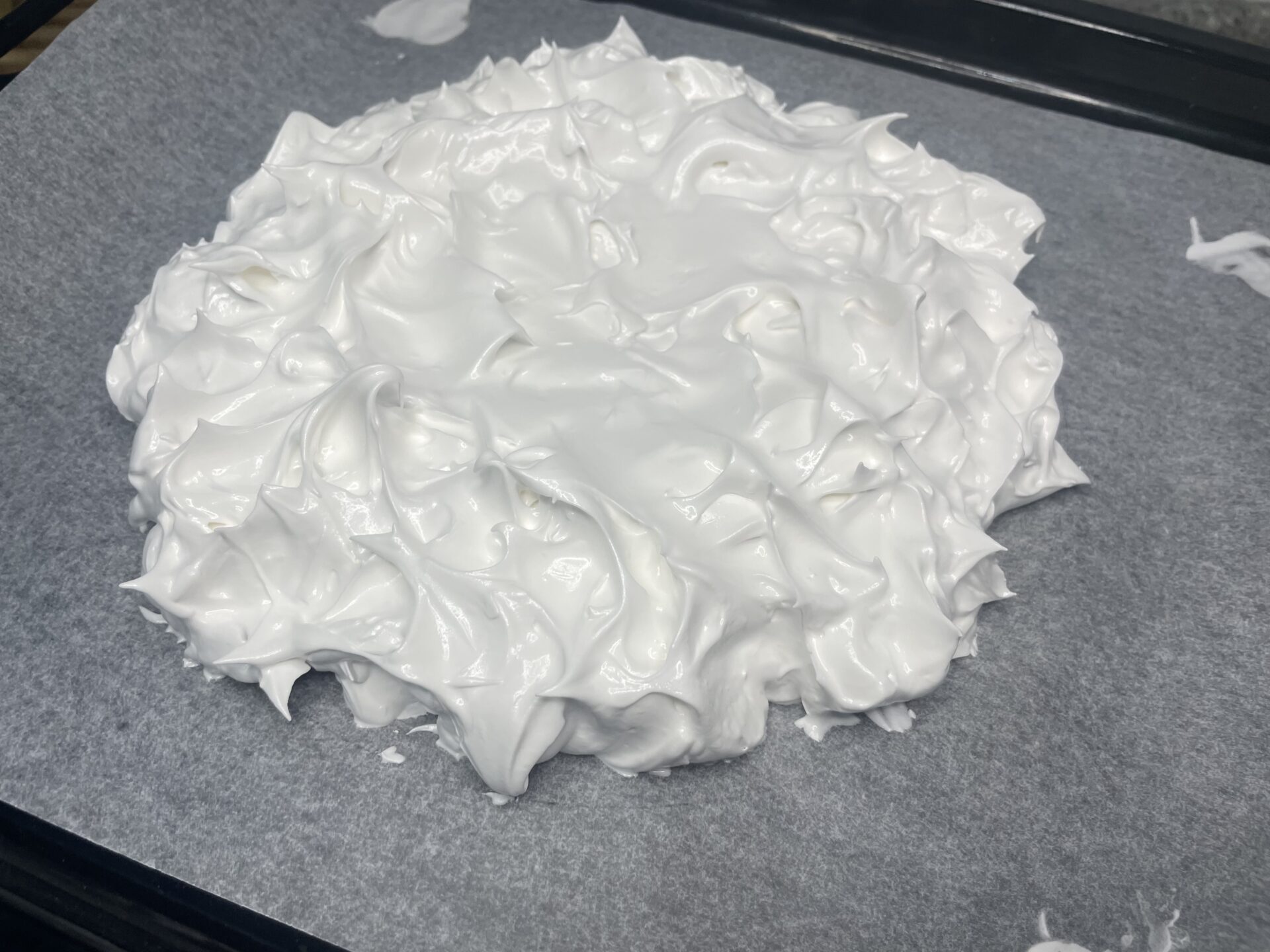
5. Not too tall, to avoid the possibility of the cake lead to collapsing.
6. Bake on a very low temp for longer!! ** follow the recipe instruction***
7. DO NOT OPEN THE OVEN AT ANY TIME! ONLY OPEN AFTER REST OVERNIGHT
8. Leave in oven overnight.
In summer!
Do not shape the meringue too big!!! (Winter you can)
If you have any question, below in the message box will answer all your confusion
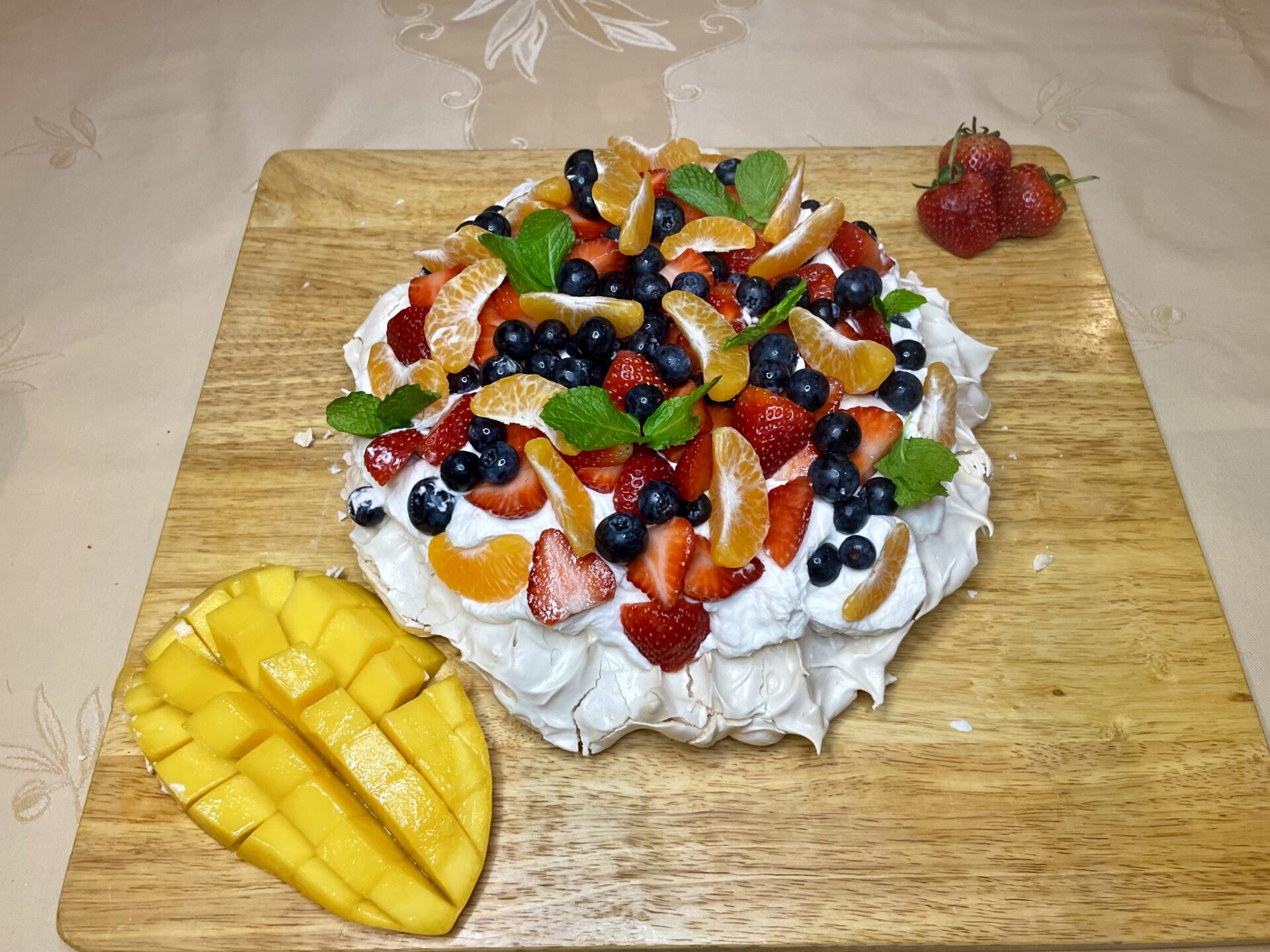
You can decorate with other fruits on the cake, allowing your creativity to guide your choices.
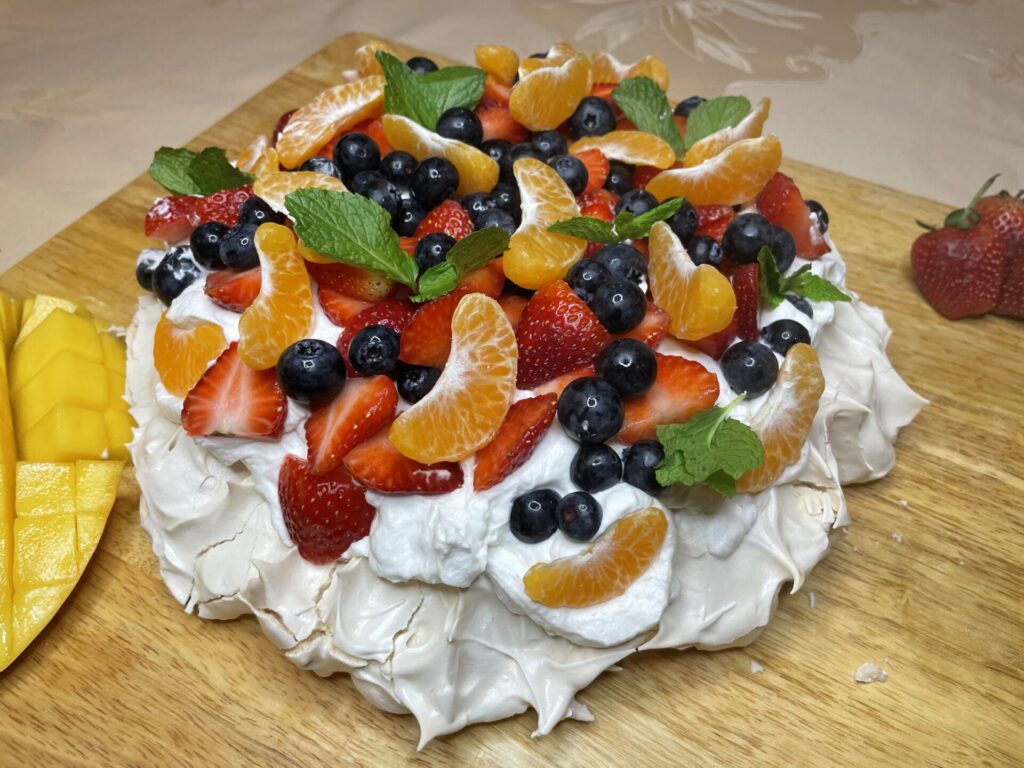
Pavlova
Ingredients
Cream
Topping
Instructions
- Egg Whites Preparation: Separate cold eggs into whites and yolks. Measure 150 ml of egg white
- Oven Preheating: Preheat the oven to 170°C (with fan set as 180°C )
- Whipping Egg Whites: Place egg whites in a bowl. Use a stand mixer (speed 7) or handheld beater (high) to beat until soft peaks form. Gradually add sugar, 1 tablespoon at a time, while beating. Continue beating for 3 minutes until thick and glossy. Mixture should not feel gritty when rubbed between fingers.

- Adding Cornflour and Vinegar: Gently fold in cornflour and vinegar, or beat on low for a few seconds to combine.
- Assembling the Pavlova:
Use the base of a springform cake pan (24cm or larger) turned upside down. Dab a bit of meringue on the edge and place a sheet of baking paper on top. Spoon half the meringue onto the paper, shaping it around 20cm in diameter or enough thickness and large as you want. Carefully shape the remaining meringue into a dome with slightly sloping edges, around 4-5cm high or 8-10 cm is also good. - Baking: Transfer to a baking tray. Place in the oven, gently close the door, and reduce oven temperature to 115°C (100°C fan). Bake undisturbed for 1 1/2 hours.
- Cooling: Turn off the oven and leave Pavlova in the closed oven overnight (or up to 18 hours)

- Finishing: Transfer Pavlova to serving platter. Slide out cake pan from underneath.
Loosen edges from paper using a butter knife, then remove paper.(Careful for this stage, you can break the meringue) - Whipped cream: beat the whipped cream till the cream starting to get thicker. Add sugar and beat till the cream and sugar combined well.

- Topping and Serving: Top with cream on the meringue as a glue of the meringue and fruit before serving.

